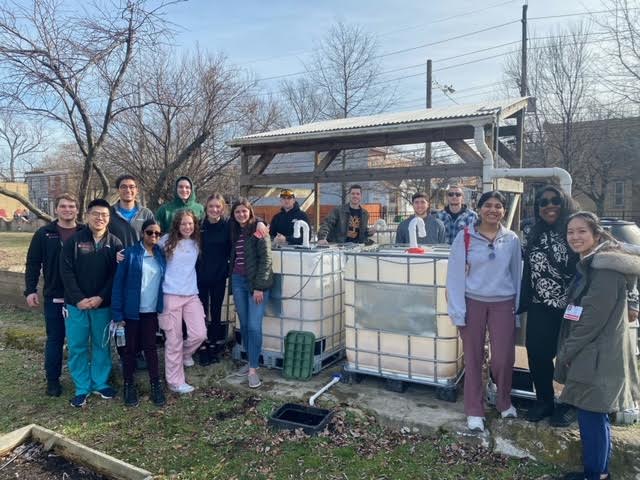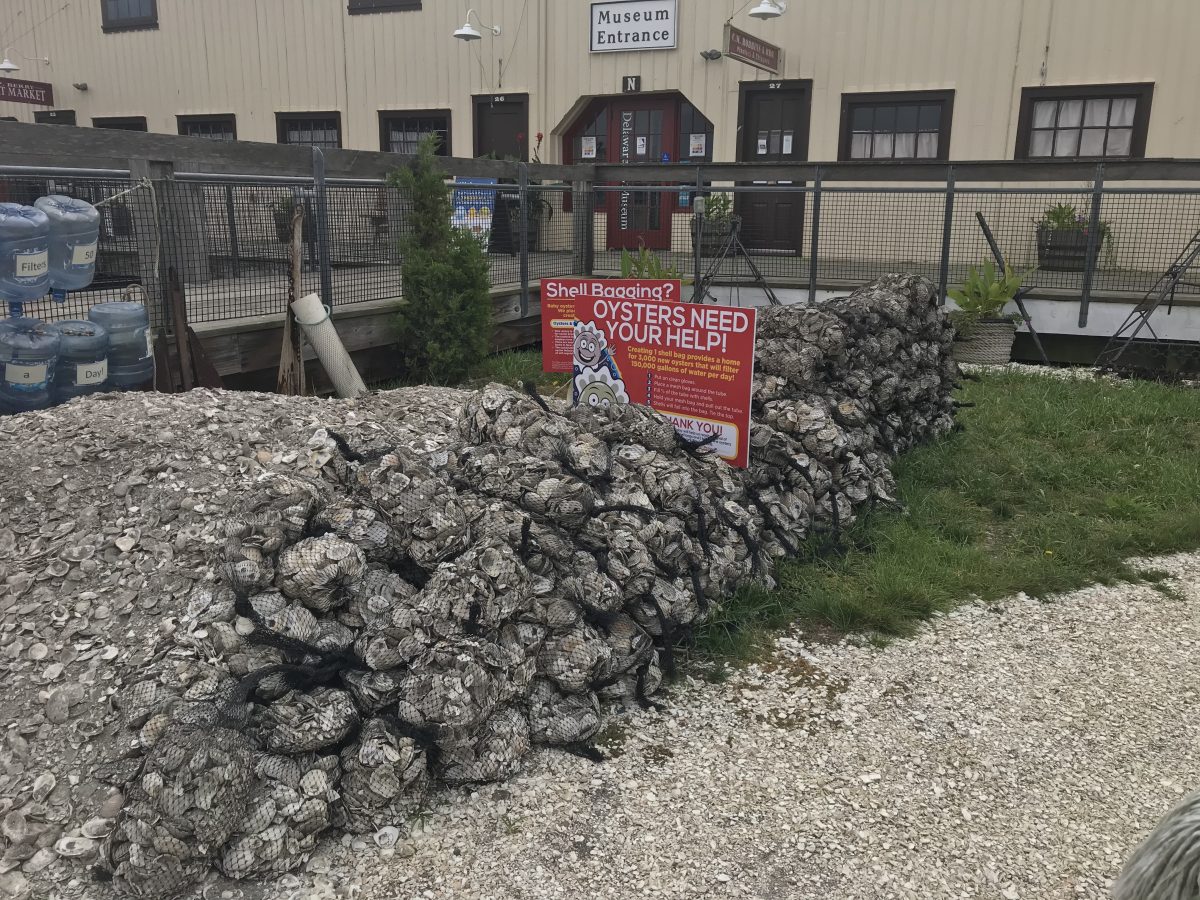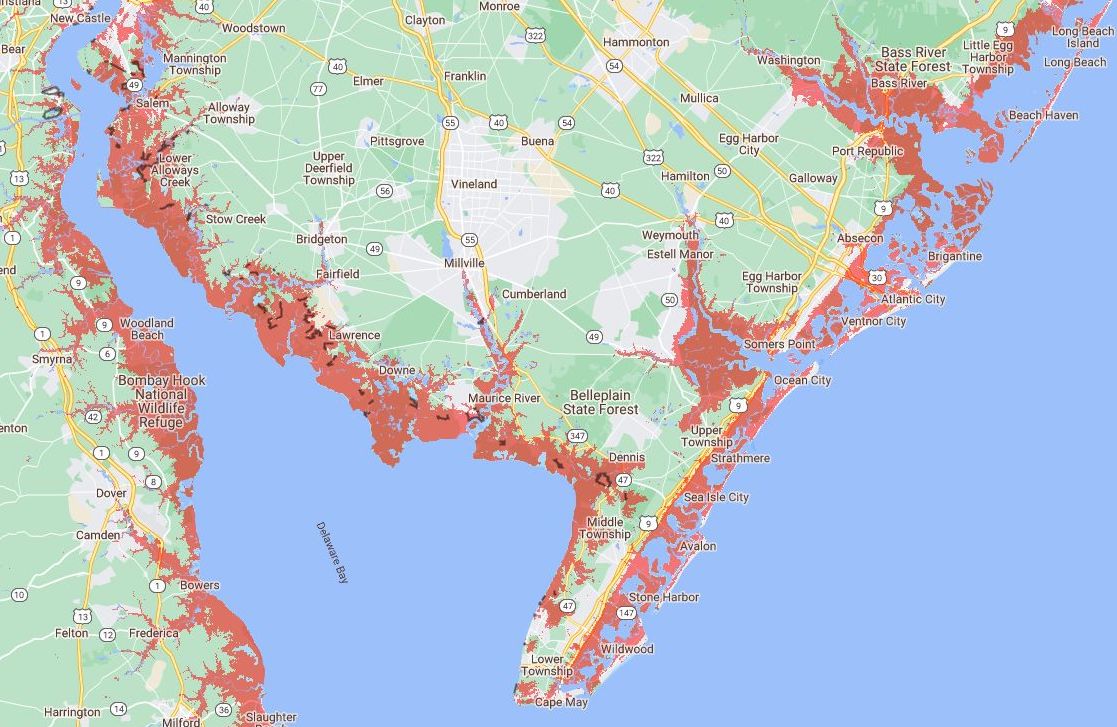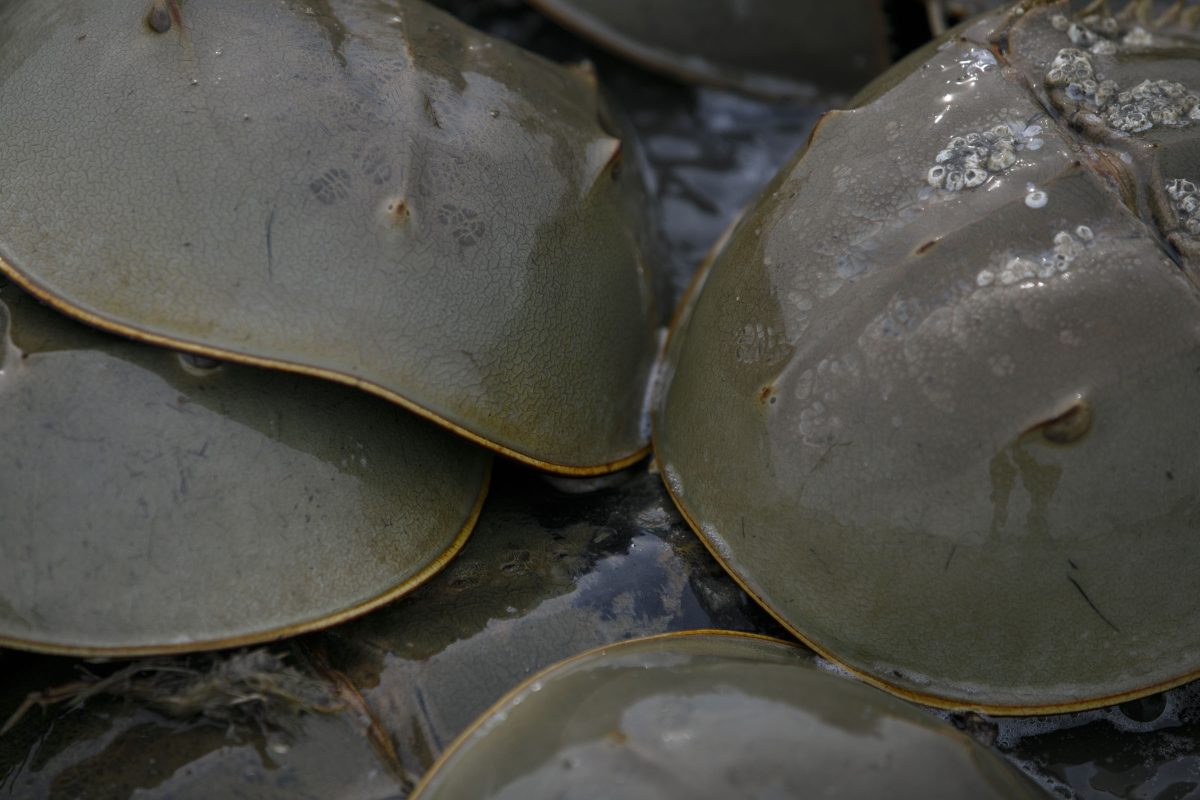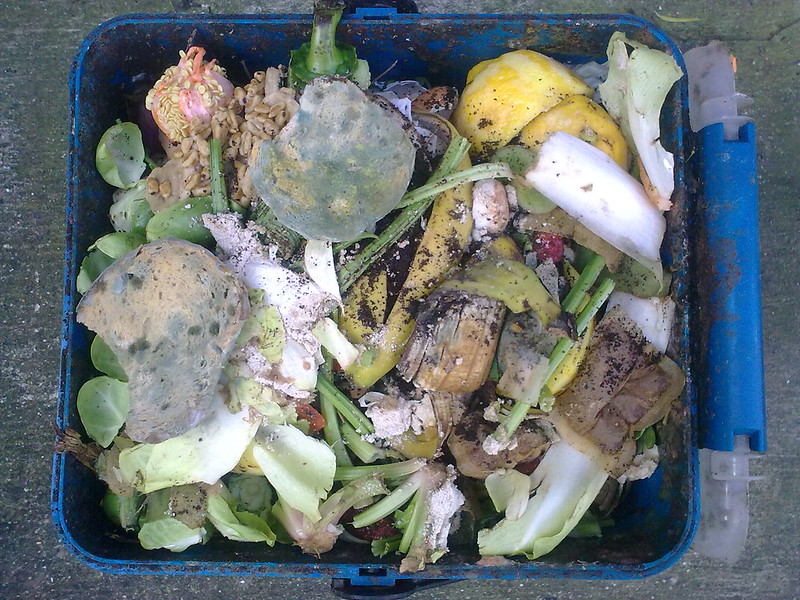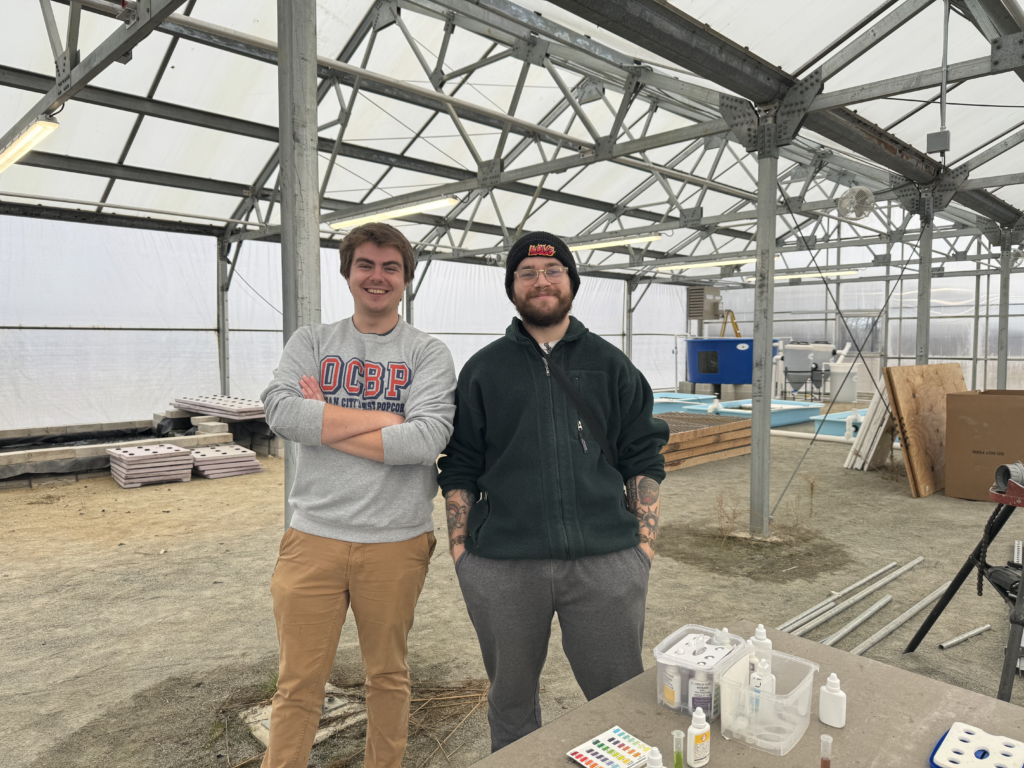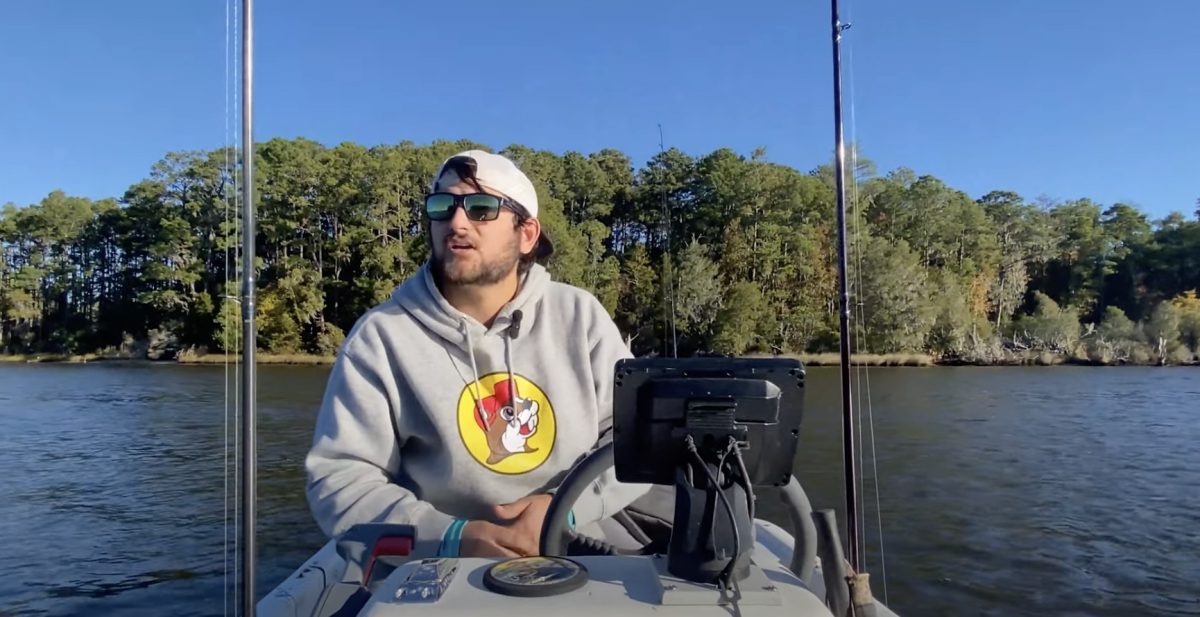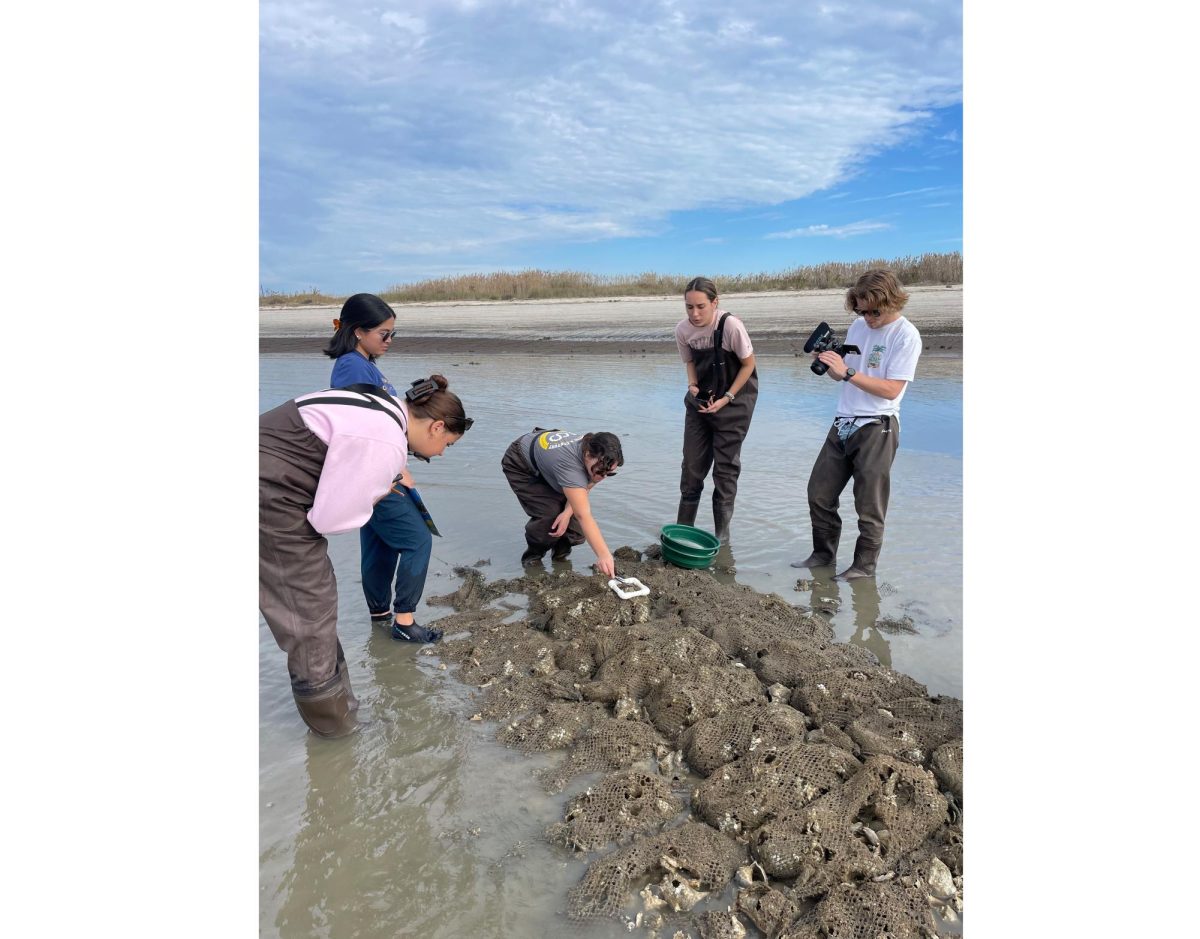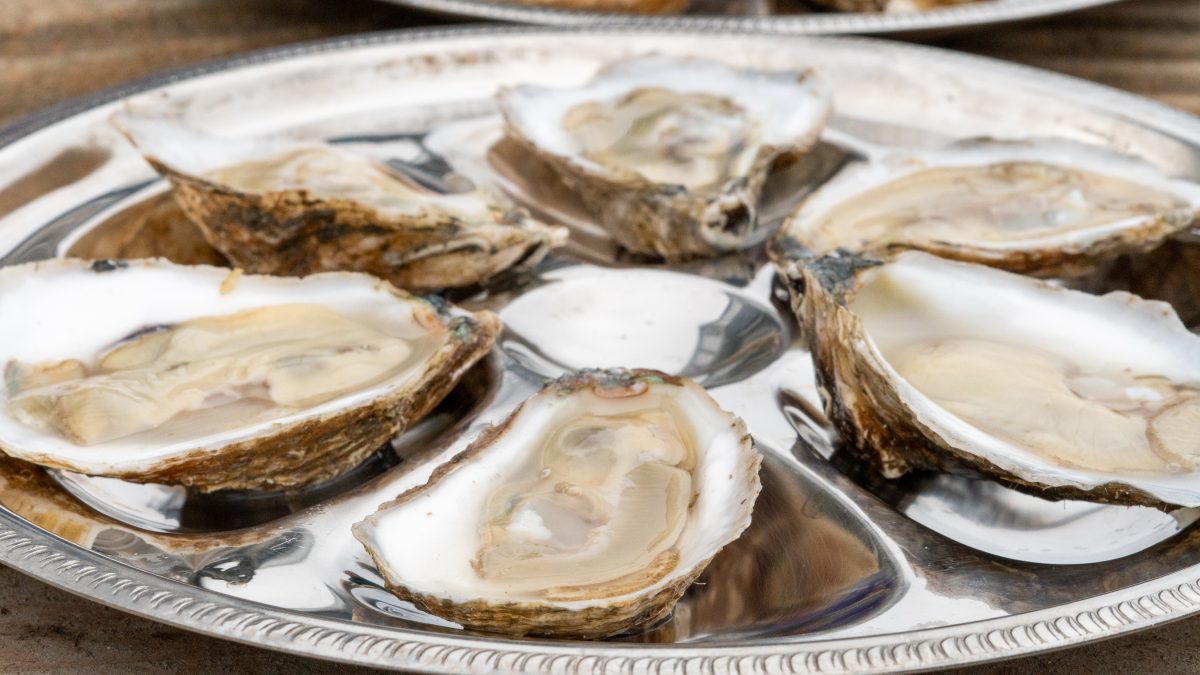By Amber Hatter
Built in 1928, the Schooner A.J. Meerwald was one of hundreds of oyster-dredging vessels for the once booming oyster industry in South Jersey. After years of great industry success and brief use as a fireboat in WWII, the A.J. Meerwald was reassigned to dredge clams after the invasive parasite Multinucleated Sphere X (MSX) was introduced to the East Coast. MSX resulted in tremendous oyster mortality rates and a struggling industry.
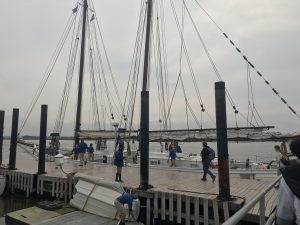
The A.J. Meerwald was later retired and donated to the Bayshore Center at Bivalve in Port Norris, N.J., and it subsequently underwent restoration. Since then, the A.J. Meerwald has remained active in providing public, educational, and charter sails. In that time, oyster populations and the industry were given the chance to rebound.
In previous years, oysters in the region have struggled due to habitat loss, overfishing, and the MSX parasite, which resulted in the loss of nearly 90% of the population. Since then, the oyster population has made an incredible recovery due to fishing regulations and oyster restoration projects. Now, these shellfish are facing a new challenge—climate change.
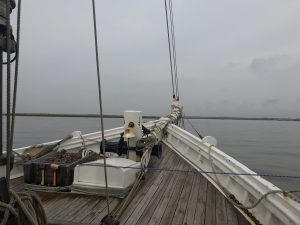
Currently, the most prominent threats to oysters, and its multi-million-dollar industry, are ocean acidification, rising temperatures, and changing estuary salinity levels—all of which to come degree can be attributed to climate change. The burning of fossil fuels proves to have devastating consequences to the climate and changes to the atmosphere threatens the health of both oysters and the economy.
Ocean Acidification
With atmospheric levels of carbon dioxide continuously on the rise, the oceans are subjected to concerning levels of CO2 concentration. As the oceans absorb excess carbon dioxide in the atmosphere, the seawater goes through a series of chemical reactions and becomes more acidic.
The change in pH has a significant impact on calcifying organisms, like oysters, especially during their developmental stage. In 2007, the Whiskey Creek Shellfish Hatchery in Oregon was faced with a phenomenon previously unbeknownst to the industry: a mass die-off of oyster larvae had occurred overnight.
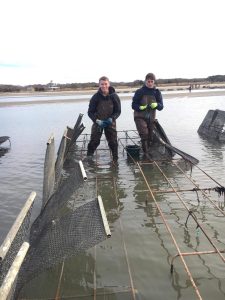
But how can the West Coast be so greatly affected while the East Coast has had no severe consequences?
Experts have one word: variability. According to Jason Morson, a researcher at the Haskin Shellfish Research Lab at Rutgers University, there is enough variability in pH across the ocean that “we see different impacts of the same species of oysters on two different coasts.”
In areas with a lot of coastal upwelling, like the West Coast, “we should see more acidic water along the coast,” explained Morson. “One of the reasons that I think that in New Jersey we don’t see really big impacts to the shellfish here yet is that we have the Gulf Stream coming up with more stable water,” which acts as a sort of buffer to the changing pH.
Although, that is not to say that East Coast oysters can’t soon face the same challenges.
Rising Temperatures
According to NOAA, “More than 90 percent of the warming that has happened on Earth over the past 50 years has occurred in the ocean.” The trend of increasing ocean temperature is unlikely to change without measures to combat climate change being put in place. Rising water temperatures are a looming threat to all marine creatures, although the severity in which they are affected varies.
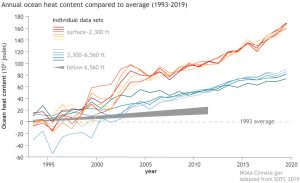
“Different species of bivalves have different tolerances for temperature …but that being said, [bivalve] larvae are a lot more sensitive to all types of stressors,” explained Mike Acquafredda, Ph.D. Candidate at the Rutgers University Haskin Shellfish Research Laboratory in Port Norris.
Larvae sensitivity isn’t the only concern. Rising temperatures also disrupt the spawning cycle of oysters. The reproductive activities of oysters follow distinct seasonal or annual patterns, according to the Global Aquaculture Alliance, and elevated temperatures can trigger spawning activity.
Temperature changes cause issues for fully grown oysters as well. “Overall, if the temperature is warm enough, it’ll reduce their scope for growth—the available energy they have to grow and to reproduce,” said Acquafredda. This can be especially dangerous if a considerable portion of the population are devoid of the energy reserves required to spawn and grow to full size.
Estuary Salinity
Sea level rise is one of the many consequences of climate change. In turn, there are changes in salinity in estuaries and rivers. As seawater rises, the salt wedge in the estuary moves further up, towards the river “…so that the water that used to be fresh is getting saltier,” Morson said.
This change in salinity isn’t terribly detrimental. “There are a group of animals that are pretty well adapted to survive in what is an extremely variable environment,” according to Brian DuVall, President & CEO of the Center of Aquatic Sciences at Camden’s Adventure Aquarium.
However, oysters can only handle so much environmental variability.
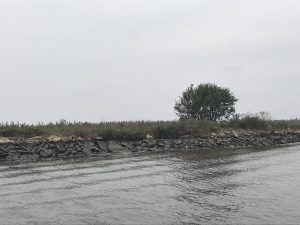
Too Salty?
Overall, if the salinity levels in the estuary increase, there is a greater threat of predators and an elevated pressure from diseases, like MSX. Morson explained: “One of the things that’s neat about oysters in the Delaware Bay is that they can tolerate salinity levels that are a lot lower than their predators and parasites.”
Yet, despite the initial prediction from scientists that the bay would see a general increase in salinity, Morson said, the opposite seems to be happening.
Too Fresh?
An increase in storm activity and rainfall as a result of climate change has had a large impact on the salinity levels in the estuary. When analyzing storm activity, Morson noted that it’s “generating a lot of extra freshwater runoff that’s coming down the river and into the bay, and it’s actually driving salinity levels down.”
“Oysters can’t tolerate fully fresh water, so when the water gets too fresh, all of the oysters… at the top of the bay get killed,” Morson said.
“If [the water] is too fresh for too long, then you wind up losing a big chunk of that population that is supposed to be protected from predators,” Morson said, “but now we’re seeing these big storm events that are resulting in big inputs of freshwater into the bay and causing freshwater mortality for the oysters.”
The result? Oysters have moved further down the bay into saltier waters. Altogether, there have been no net negative or net positive changes, but it remains a matter of unease that should be closely monitored.
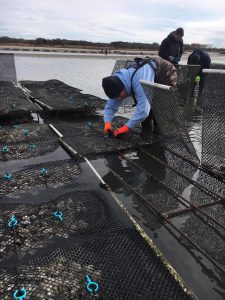
What now?
It is imperative that the water in estuaries be closely monitored in the coming years—specifically in observing pH, temperature, and salinity changes. Some hatcheries on the West Coast, like at the Whiskey Creek Hatchery in Oregon, have resorted to treating the water that comes into the hatchery with soda ash. In doing so, the pH levels remain high enough to allow for complete shell formation in the juvenile oysters.
The hatchery manager at the Aquaculture Innovation Center for the Haskins Shellfish Research Lab confirmed that there is no long-term monitoring data set there, but staff there are planning to monitor pH levels this coming season.
“Hatcheries have to make sure that they keep the conditions in their facilities at optimal levels in order to produce enough oyster seed or clam seed to support the regional industry,” Acquafredda explained. He also noted that changes to estuary ecosystems is key in protecting oyster populations from the threats they face.
To ensure the prosperity of the industry as a whole, it’s necessary to understand the root causes of climate change, one of the most notable being the extensive burning of fossil fuels. Reimagining the way our society sources energy may be a means to end the progression of current ocean-warming trends.
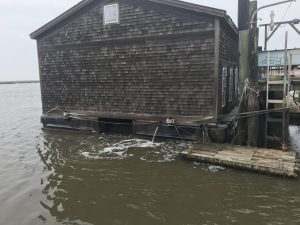
Renewable energy may serve more purposes than just combating climate change. DuVall explained, “There is so much economic opportunity associated with the development and installation of systems that reduce our carbon footprint that you can look at that as a way of actually stimulating the economy.”
Knowing that some are apprehensive with the idea of moving to cleaner energy due to the cost, DuVall added, “What everybody needs to recognize… when you look at that cost and you compare it to the cost of not doing anything, it’s much cheaper than to do something about it than it is to just let it happen.”
With cleaner energy comes healthier oceans, allowing the Schooner A.J. Meerwald to continue sailing and educating people about oysters and the history of the industry.



